Religion With Women in Black Hat and Long Dress
Clothing worn by religious leaders and people of devout faith often is much more than a fashion statement. A simple robe can make a Buddhist monk feel closer to Buddha, while a modest sweater can help a Mormon missionary project a professional image as she proselytizes.
Below are dress guidelines of six religious groups and why they wear what they wear:
Buddhist monks and nuns
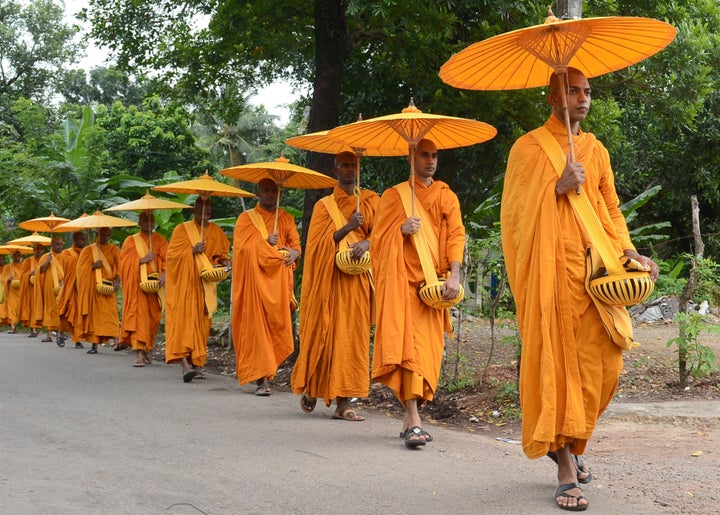
Sri Lankan Buddhist monks walk in line as they seek offerings of food in Colombo on July 25, 2015.
LAKRUWAN WANNIARACHCHI via Getty Images
The robes worn by Buddhist monks are said to date back to the Buddha's time. There are commonly three components to the robe: an inner garment or waistcloth, an upper robe, and an outer robe. Buddhist nuns typically wear a vest and a bathing cloth. In the Buddha's time, monastic robes were patched together with scraps of cloth to reflect the simple life monks had vowed to live. According to some Buddhist clergy, the robes create a "uniformity of intention" visible at first glance. Though the colors of these robes vary by region, the earlier garments worn by Buddhist monks were likely a yellow-orange color from being dyed using vegetable matter and spices like turmeric or saffron.
Catholic priests
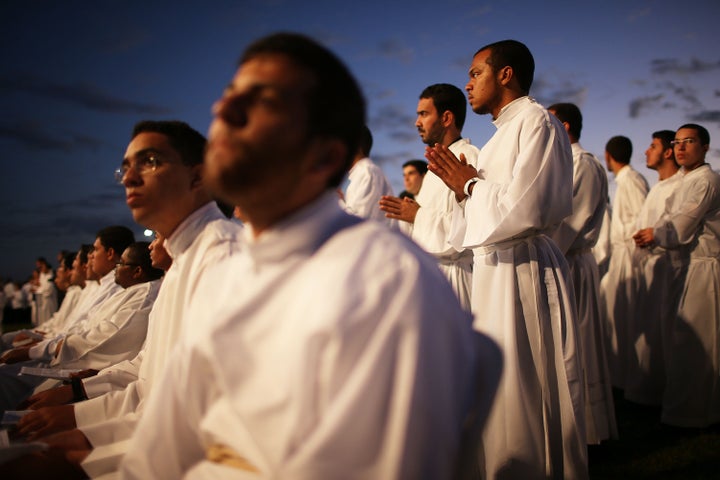
Catholic priests gather outside of the Cathedral of Brasilia while celebrating the holiday of Corpus Christi on June 4, 2015 in Brasilia, Brazil.
Mario Tama via Getty Images
According to the Directory for the Ministry and Life of Priests, prepared by the Congregation for the Clergy and approved by Pope John Paul II in 1994, clergy must dress in a way that distinguishes them from the laity. "It is particularly important that the community be able to recognize the priest, man of God and dispenser of his mysteries, by his attire," the document states. Catholic priests have traditionally worn a cassock, or long robe, though modern clergy often wear simple black suits and a Roman collar outside of liturgical functions. Many priests also wear a clerical collar, a narrow, often white band that attaches to the clergy shirt. This can be worn with a tab-collar shirt (revealing just a small square of the collar at the front of the throat) or a neckband shirt (revealing the entire collar.) Though this style of dress is common for Catholic priests, it likely originated in the Protestant tradition, circa the mid-19th century.
Orthodox Jews
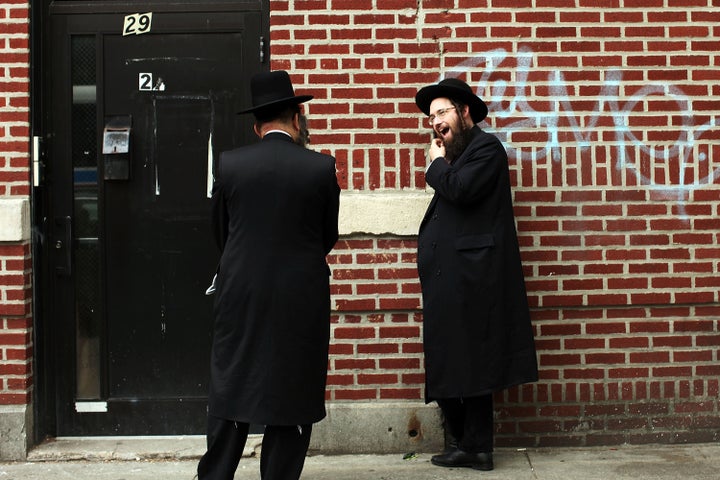
Members of the Jewish Orthodox community talk on a street in a Brooklyn neighborhood on June 14, 2012 in New York City.
Spencer Platt via Getty Images
Orthodox Jewish women are encouraged to cover their hair and wear skirts below their knees as a sign of modesty. Orthodox men typically wear long black garments to indicate a "lack of concern for color and other dictates of fashion, and thus helps keep priorities straight," according to Chabad guidelines. Orthodox men also wear a kippah, tallit, or shawl, and tzitzit, which are strings tied in a particular pattern that fall from the four corners of the tallit. Clothing styles vary somewhat from sect to sect. For instance, Haredi men typically grow long beards and wear wide-brim black hats. Some Orthodox men also wear payot, or sidecurls, in reference to a Torah passage that prohibits men from "rounding off the corners" of the head.
J ain monks and nuns
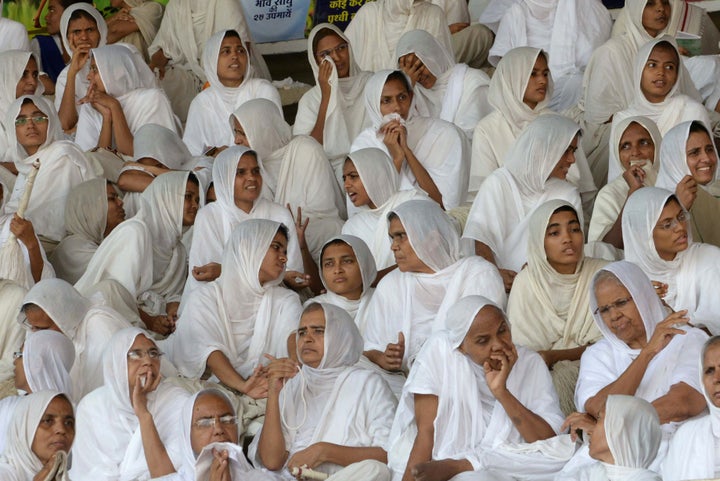
Jain Sadhvijis (Jain Nuns) attend the 'Vadi Diksha' of Indian millionaire-turned-Jain-monk, Bhanwarlal Doshi.
SAM PANTHAKY via Getty Images
Jain monks and nuns are encouraged to live austere lives. Many show this by wearing plain, white robes. In the Digambara sect, however, monks reject all forms of worldy possessions, including clothes. Acharya Kundkund, a revered, 1st century Digambara monk, reportedly wrote that monks must do more than remain naked in dress. "Oh monk!" he wrote. "What is the purpose of remaining naked (or clad) if you indulge in malicious behaviour, laughter, jealousy, delusion and untamed desires. Being full of blemish, you deserve disgrace."
Sikhs (traditional)
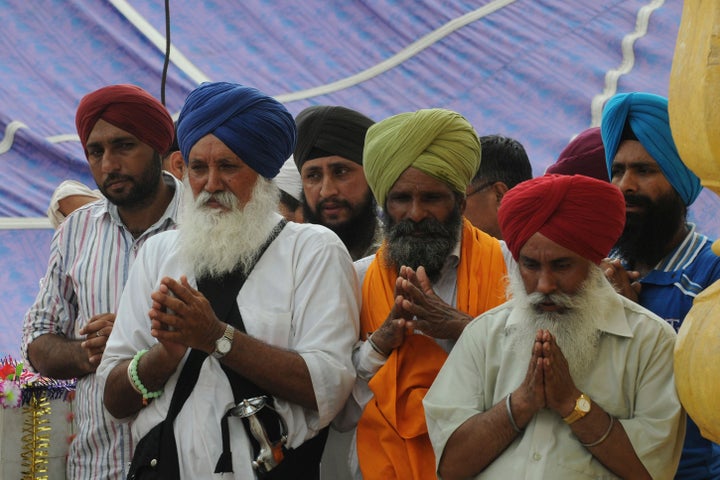
Sikh pilgrims offer prayers at a Sikh shrine in Lahore on June 29, 2013.
ARIF ALI via Getty Images
Sikh spiritual clothing, or bana, includes a turban, modest attire and the five articles of faith. The turban, or dastar, acts as a symbol of piety and dedication, according to the Sikh Coalition. Sikhs often wear their hair unshorn as the founders of the Sikh faith did and in keeping with religious requirements. The five articles of faith include: the kachhera, or loose undergarment; the kanga, or wooden comb; a kara, or iron bangle; kes, or unshorn hair; and a kirpan, or ceremonial sword. Guru Gobind Singh introduced the five articles in 1699 as a way of identifying members of the faith and binding them together.
Mormon missionaries

In this Jan. 8, 2013, file photo, Mormon missionaries walk through the halls at the Missionary Training Center in Provo, Utah.
ASSOCIATED PRESS
Full-time Mormon missionaries, called elders and sisters, are required to wear modest clothing and plain hairstyles. Women must wear either blouses with skirts, or dresses that cover to the knee. Men must wear business suits. Sweatshirts, backpacks, tattoos and body piercings, other than ears, are not allowed. The clothing guidelines are meant to ensure that missionaries look "professional" and "attractive," according to the website of the Church of Jesus Christ of Latter-Day Saints. The church recently announced that elders in countries with hot climates were no longer required to wear suit coats while proselytizing.
Also on HuffPost:
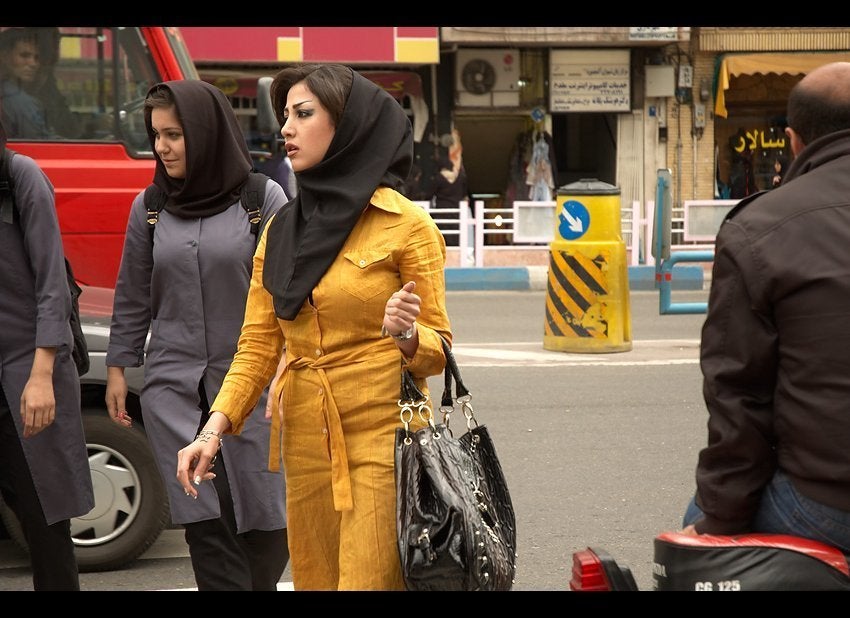
Hijabs, Niqabs, Burqas: Know Your Muslim Veils
Source: https://www.huffpost.com/entry/why-these-six-religious-groups-wear-what-they-wear_n_55ce7bcae4b055a6dab07ad0
0 Response to "Religion With Women in Black Hat and Long Dress"
Postar um comentário